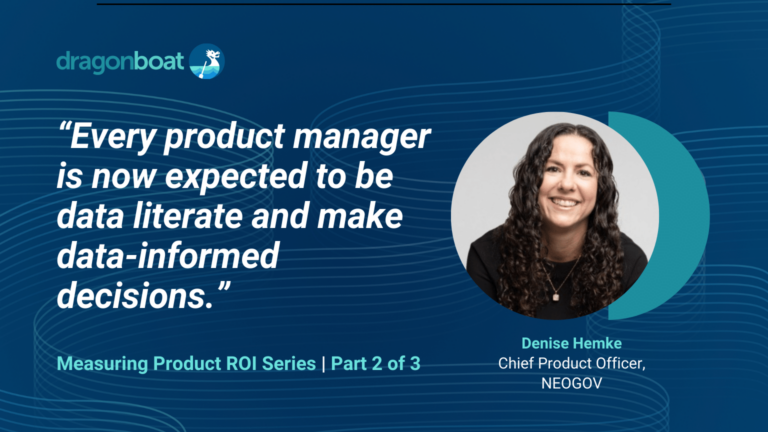And how to find the right alternative for your organization
The Telltale Signs
As your teams scale and your product management process matures, you may find that you’ve outgrown your basic roadmapping tools. How can you tell? Here are some telltale signs you may need to make a change in the roadmapping tool you use:
- Delays: Roadmaps are delayed so much that marketing and sales always adds a ‘delay buffer’ to your plan
- SOT: Your CPO or product leaders don’t have a single source-of-truth for your strategic roadmap
- Product ROI: Your CEO keeps asking about the ROI on product and engineering
- Intake: People wonder where product feedback requests go and their status
- Turnover: Product Managers are burning out and cannot prioritize or resource all requests
- PM Hamster Wheel: Engineering teams perceive Product Managers to be reactive and not always aligned with vision and strategy, so there is a continual need to hire more program managers to keep delivery on track
It’s no wonder that Senior Product Managers, who are the bedrock of any great product organization, are one of the top 15 high paying roles people want to quit.
The good news is that these telltale signs of struggling product teams don’t often mean that your team is dysfunctional, they are often more of an indication that you’ve outgrown your current roadmap tool. In fact, there is a growing body of research that shows the tools your teams use actually define the way your product team works. This is why traditional roadmapping is often not enough to address the end-to-end operating needs of a modern product team.
Before we dive in, let’s take a look at terminologies as roadmap is often used beyond its original definition, which includes roadmapping, product management, and portfolio management. Here is a summary of some of the differences:
- Roadmaps are about what to build and when, and they communicate what’s next.
- Product management is about how to improve a product for customers and business needs. It covers both what’s next (roadmaps) and what’s not next (the possibilities that have been deprioritized).
- Portfolio management is about where product management needs to invest (and divest) across all products in order to impact the overall business goals. It includes both product management and roadmaps and also takes into consideration past product performance and resource availability.
Business goals and strategies guide portfolio decisions, which in turn influence product management decisions on what’s next, AKA the roadmap. So with this backdrop, let’s look at the type of “roadmap” tools and how these needs are fulfilled.
In this article, we will cover:
- The 4 main activities a product organization performs with roadmapping tools
- Types of “roadmapping” tools a product team may use
- The key operating needs a product organization has from its roadmapping tools
- Where traditional roadmapping tools fail
- How to decide on the right tool for your product teams
The 4 main activities product teams need to perform with roadmapping tools
1. Prioritizing and building the right products
Building the right products that delight customers at a price they are willing to pay is no easy feat. The key to doing this lies in the ability to balance customer, product and business needs. This requires ongoing and continual prioritization, something that is a key challenge for traditional roadmapping tools (which centers on a waterfall approach).
2. Delivering products
87% of product teams fail to deliver on roadmap commitments because of unanticipated dependencies, scope changes, and resource bottlenecks. This lack of anticipation can happen at the planning and prioritization stage (not being able to see potential conflicts, dependencies or bottlenecks) or in the execution stage where new priorities, conflicts, or dependencies show up in the business.
3. Enabling teams to drive product adoption (aka go-to-market)
72% of products are poorly launched or adopted. There are major challenges in coordination and collaboration between product and go-to-market teams. The product development lifecycle (PDLC) must expand to more than just product design engineering. If a product or feature is not in the hands of the customer, there is likely to be no outcome. Traditional roadmapping tools do not directly support product and GTM collaboration, leading to failed product launches and poor adoption.
4. Product teams must evaluate product performance and adjust
Are the products the team is building hitting their goals? Typical roadmapping tools do not connect to business outcomes, and while they may try to link to a goal, a goal is only a wish if it cannot be measured. But let’s say that the team is able to get visibility into outcomes (through perhaps a manual effort), there is still a need to continually check and “rebalance” efforts against those goals depending on outcomes. That is, product leaders need to adjust how much effort, energy, and investments they allocate against a portfolio of product investments, and divest or stop certain investments to shift focus, energy, and efforts into other areas that are driving disproportionate outcomes.
Traditional roadmapping tools “fight” against this continual rebalancing act, since they focus more on what it takes to get the work done, rather than the impact that a portfolio of work will have on outcomes. Said another way, no product manager has ever said their product doesn’t matter, yet, some products lead to business outcomes, while others do not. And yet, mature product organizations have to make those investment decisions all the time in order to be successful–they have to be outcome-focused. How can modern product teams navigate that investment and divestment cycle with traditional roadmapping tools?
Common types of roadmapping tools a product team may use
- Homegrown or make shift tools: these include general purpose tools like Airtable, Google sheets, Notion and Coda
- Project and task management tools: these include tools like Asana, Monday.com and Jira
- Roadmap visualization tools: these include tools like ProductPlan and Roadmunk
- Product management tools: these include tools like Productboard and Jira Advanced Roadmap with product discovery
- Product portfolio tools: these include Aha!, Planview and Dragonboat
Where traditional roadmapping tools fail product teams
As outlined above, traditional roadmapping tools break down in a number of critical areas that agile product teams need in order to be effective:
- Outcome blindness: Traditional roadmapping tools often do not connect into outcomes, becoming feature oriented as opposed to outcome-oriented.
- Delivery blindness: Traditional roadmapping tools do not provide visibility into delivery, or give the ability to pre-emptively spot and resolve product delivery hazards (like resource conflicts) before they occur.
- GTM Misalignment: Traditional roadmapping tools do not align all key stakeholders (particularly go-to-market teams) in strategizing, building and launching new product or features to drive business outcomes. What is the point of releasing something that will never be adopted by your users?
- Process blindness: Traditional roadmapping tools do not enable all operating processes, including cross-team planning and delivery enablement. Oftentimes, the best laid schemes of product teams go astray as soon as they attempt to execute on their roadmaps.
- No investment rebalancing: Traditional roadmapping tools do not enable divestment or one product or feature vs. another, because they are all about building feature factory and assembly lines that produce features, as opposed to rebalancing investments based on outcomes. Doing some things is just as important as consciously NOT doing others.
- Lack of alignment or autonomy: Traditional roadmapping tools do not support both alignment on goals and strategies, and the autonomy needed to execute them.
What do great roadmapping tools look like? AKA how to decide on the right tool for your product team
A modern roadmapping tool needs to take the entire product portfolio into account, enabling the entire product organization to operate as a cohesive unit (rather than a collection of siloed initiatives across product groups).
Enable and support all key roles in a product organization
From product executives, to product managers, to product ops, and stakeholders, modern roadmapping tools need to unify all stakeholders around a single source-of-truth on all product investments.
Portfolio-wide, not siloed
No product manager will ever raise their hand and say, “My product is not important. Take my resources away.” But product leaders need to have the ability to make portfolio-wide decisions, and it starts with being able to see and understand the tradeoffs and potential impacts of investment decisions across different product investments.
Align on goals and guide roadmaps
Teams often confuse product features with blocks of work. But modern product organizations do not produce work, they drive outcomes. And linking a product feature to a goal is not the same as having goals first, figuring out what product to build to address those goals, and then measuring the impact of the product launched against those originally intended goals.
Offers a single source-of-truth for revenue and product collaboration
Rather than forcing product managers to be the only collection point for feedback and insights, modern product organizations enable and encourage revenue and customer-facing teams to collaborate around a source-of-truth with the product organization. This eliminates the “black hole” effect of asking sales or customer success teams to submit a product request, which then disappears into the ether.
Ready to move on from your tool? Try Dragonboat
Ready to try a portfolio roadmapping platform? Get a demo of Dragonboat today and see what you’ve been missing from your current roadmapping solution.




